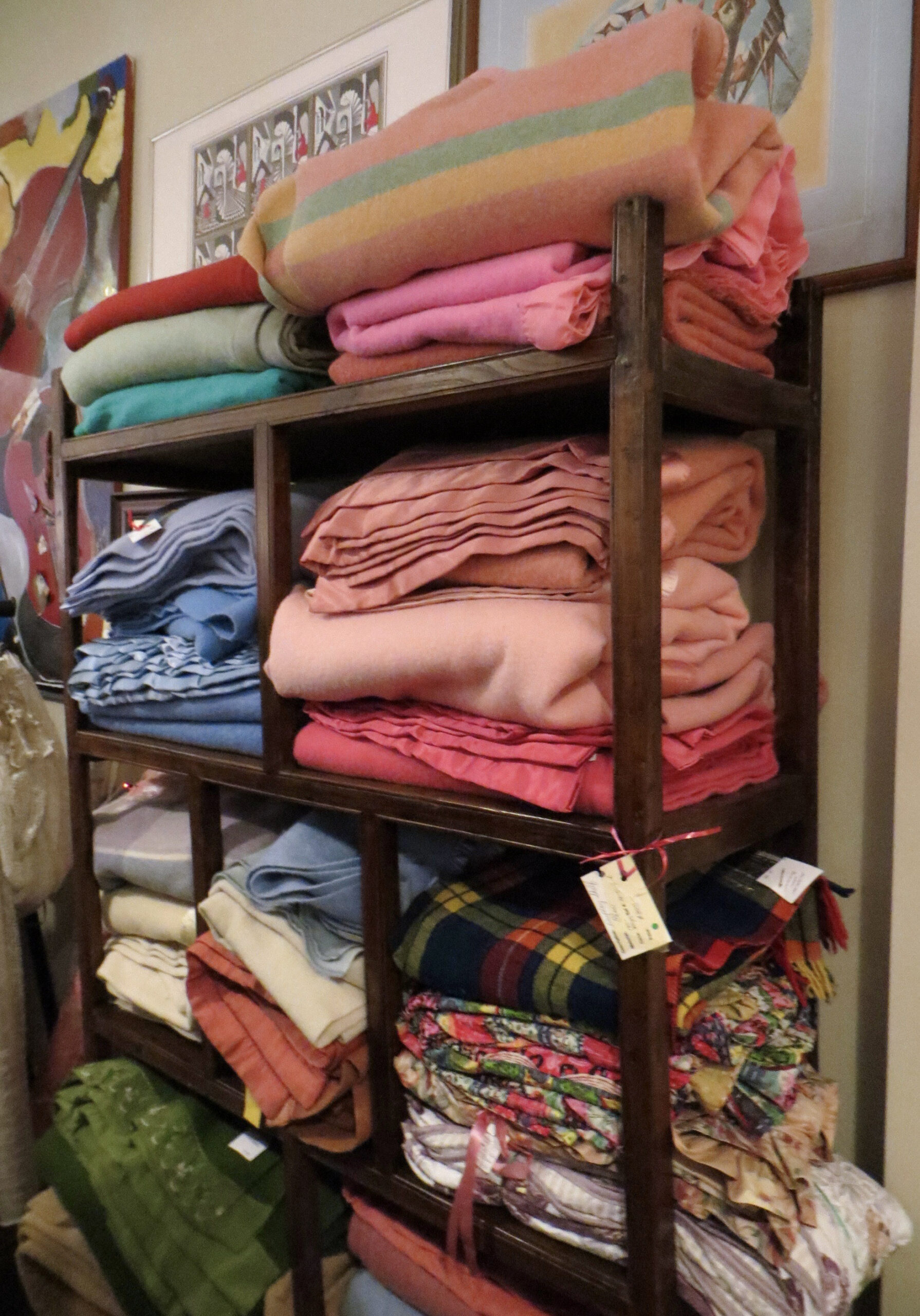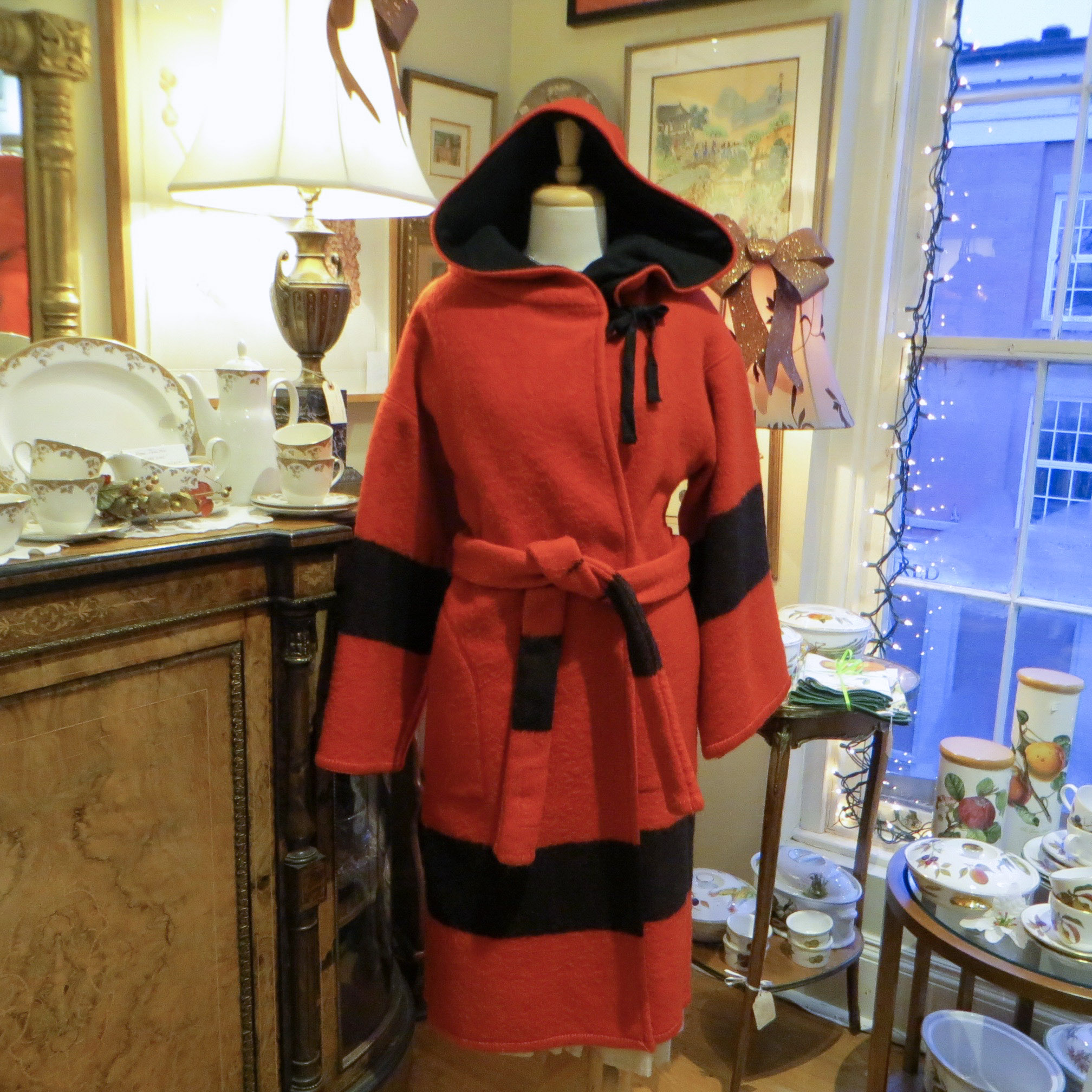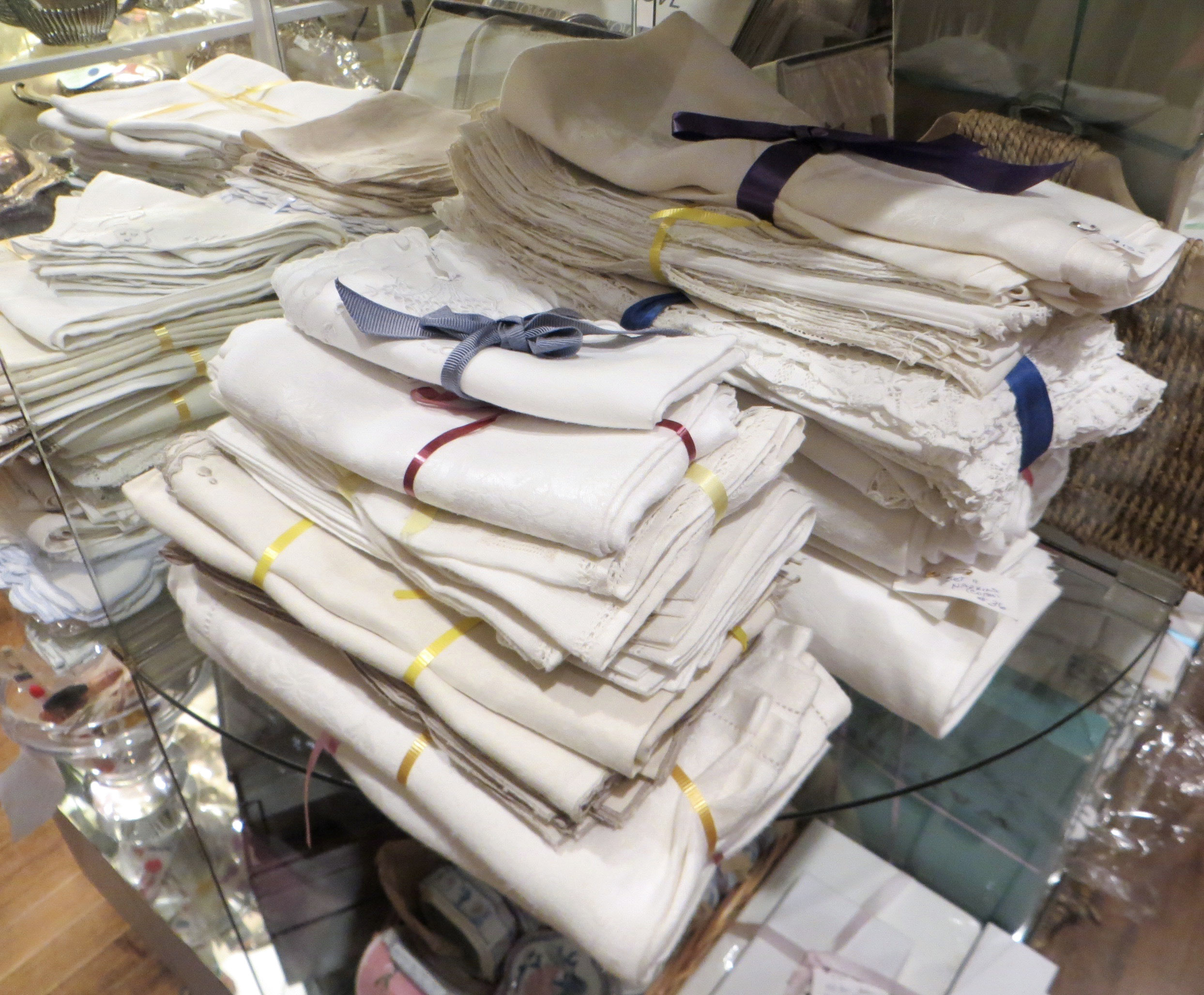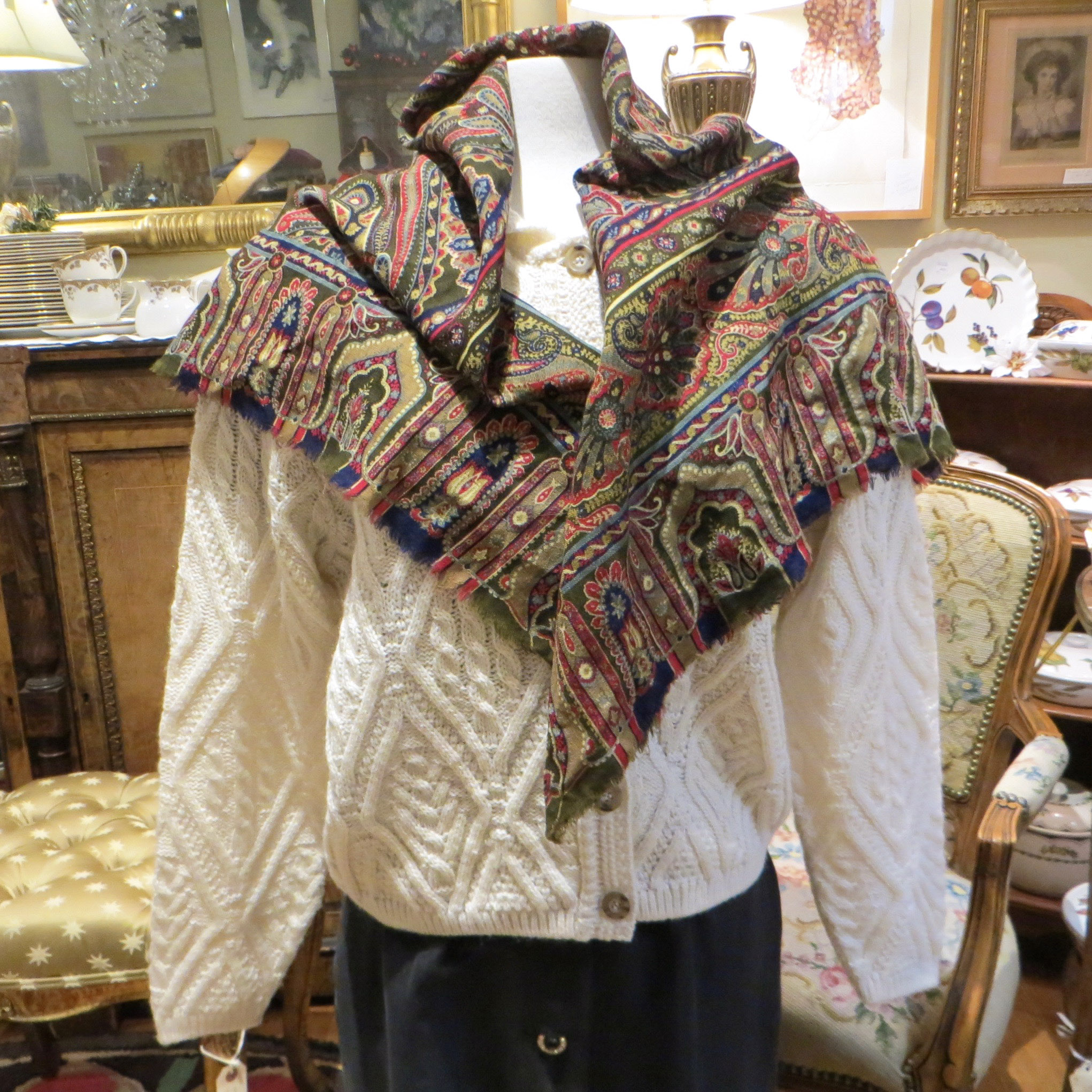Linens for the Home, by Caitlin Kelly

An array of colourful wool blankets can be found on the third floor of Antiques on Queen.
As the days shorten mercilessly – sunset at 4:30!? – and the temperature plunges, there are few comforts more reliable than a stock of cozy wool blankets and throws. Whether a classic cream wool Hudson’s Bay point blanket, with its distinctive four stripes of red, yellow, green and dark blue, or a handsome woven tartan, a well-chosen vintage blanket, coverlet or throw can add warmth and style to any bedroom or sofa.
I recently scored a pristine, queen-sized, blue and white home-spun coverlet in one of my favorite antique stores in suburban Maryland. I had no immediate use for it, but had so rarely even seen one, let alone in such immaculate condition, I bought it at once.
When I left home, my mother gave me a vintage wool patchwork blanket I used for decades until it literally wore out. I loved wondering where all those colored bits came from, and who before me snoozed beneath it.
The Hudson’s Bay blanket remains popular and an icon of Canadian history – although a problematic reminder of colonialism to some Indigenous peoples – and you’ll find it used from chichi resorts to cottages across Canada. Made of heavy, thick wool, it lasts for decades – as one happy owner recently told The Bay, having enjoyed hers since 1965.

A vintage red and black Eaton’s Point coat.
It also went through some interesting iterations in earlier centuries, according to the Canadian Encyclopedia:
In central and eastern Canada, many Métis and French settlers and traders wore their Hudson’s Bay Point Blankets as outerwear robes, and later turned them into capotes — handmade wrap-style coats. Capotes became so popular that, in 1706, the HBC hired a tailor to construct the blankets into these coats. The capote was particularly popular with trappers as the wrap style made it easy to move and hunt in, while keeping them warm.
Whatever you choose, check for stains, holes and tears, but repairing an otherwise lovely piece can also revive it.

Sets of linen napkins can be found in the second floor linen room.
As you prepare for the holidays, also consider adding fine table linens to your table, whether a white damask tablecloth, one with holiday patterns, or a solid color you can accent with matching (or mixing!) candles, flowers and napkins. The workmanship in older linens is so beautiful! I have a variety of vintage linen napkins and tablecloths and really enjoy using them all, even for every day. It’s such an easy and simple way to make any meal more elegant.
Also, so much better to re-use sturdy linen and cotton than throwing away all those paper towels and paper napkins.
White tablecloths and napkins can feel intimidating, but are easily bleached (gently!), and using a placemat or charger will help keep them cleaner. The quality you’ll find using quality vintage linens is unmatched by almost any current manufacturer – whether they’re carefully hand-embroidered, faggotted, or include drawn threads. Many vintage linens, especially napkins, may also bear the long-lost embroidered initials of a previous owner, but usually in unobtrusive white cotton or linen. Oh, for the days of a bridal trousseau including such items!

This cotton paisley scarf is one of many to be found in the shop. If you ever find yourself in need of a scarf, this is the place to find it!
Another category of textiles to consider adding to your home and enjoying are my obsession – paisley shawls! These offer a whole new world of woven beauty, copied from the handmade cashmere originals that started in India and were made fashionable and popular by Josephine, Napoleon’s wife, then widely copied by Scottish mills in less-costly wool, and draped over 19th century bustles – until bustles went away! In the early 19th century, thanks to her style, it became the status object every woman craved.
There are paisleys that are woven and paisleys that are printed; even those in ratty condition can be re-purposed as “cutters” – for gorgeous throw pillows. There are many variations, including a “moon shawl” which folds into triangles for draping. The best reference book on paisleys is this one, which I own. I have a small but much beloved collection; the largest (which is massive and which I found in a NH shop many years ago) I’ve used as a table cover, while my favorite is small, made of soft red cashmere and hand-embroidered. I found it in an upstate NY antique store and it’s perfect tucked into the neckline of my winter coats, adding comfort, style, warmth and history — and great for chilly airline flights.
I love mixing centuries!
